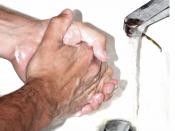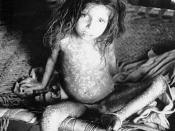GERMS
For as long as humans have been on this planet, the microscopic life forms that we call germs, or pathogens, have been here too. For all this time they have been multiplying in the soil, in the water, and in our bodies. They are in the mouth, on the skin, and even in important organs. But that is not always a bad thing, because humans could not live without germs. Some germs, or "microbes" help digest food, while others produce vitamins. Most of the time, people and germs coexist peacefully; in fact there are trillions of germs on you right now.
Even though some germs are good for us and help us, others can give us diseases. Some diseases only make us sick for a period of time, while others cause incurable and deadly illnesses. Such diseases as cancer and diabetes result mostly from environmental conditions or inherited weaknesses.
They are considered noninfectious diseases because one person or animal cannot make another one sick.
For a long time, people thought germ-born illnesses could be conquered by science. In the late 1900s, new vaccinations and drugs seemed to have them on the run, but germs have bounced back. The drugs that once worked lost their punch, while new diseases keep cropping up. Medicine has made huge strides in fighting germs, but Earth's tiniest creatures remain our biggest foes.
Germs are often called pathogens, which means "the causes of disease," in Greek. The four main types of pathogens are bacteria, viruses, parasites, and fungi. A bacterium is a simple one-celled organism. They are like us because their goal is to survive and prosper. Bacteria are three and a half billion years old. They are the most numerous living thing, and among the smallest. Bacteria can reproduce very fast. One bacterium can...



Germs
Yours is a good essay on microbes and it could be improved by including a bibliography.
5 out of 5 people found this comment useful.